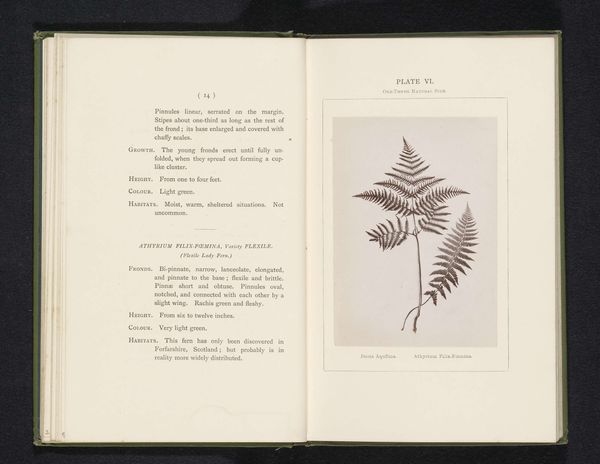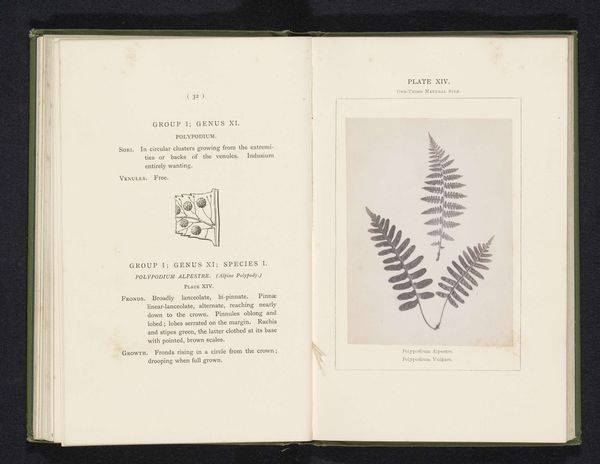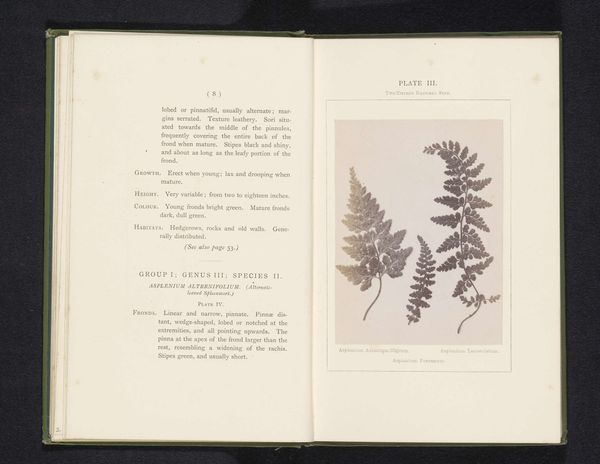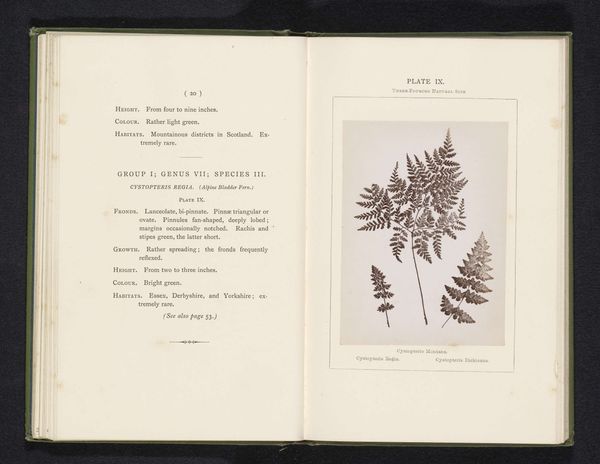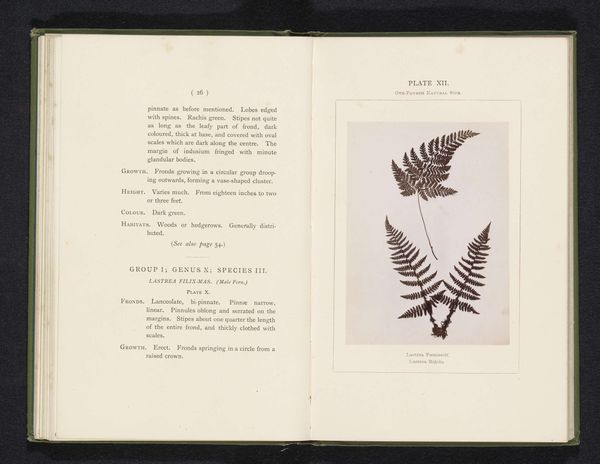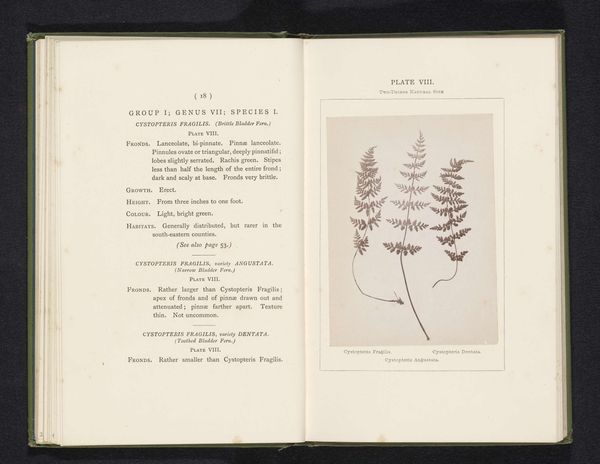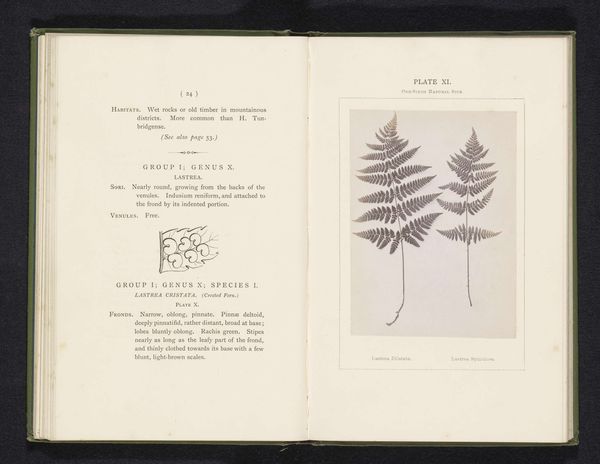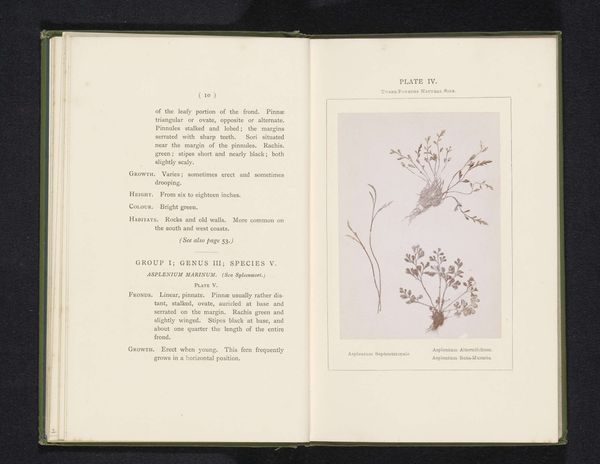
print, paper, engraving
# print
#
paper
#
academic-art
#
naturalism
#
engraving
Dimensions: height 113 mm, width 87 mm
Copyright: Rijks Museum: Open Domain
Curator: Looking at this engraving, entitled "Bladeren van drie soorten eikvarens" or "Leaves of Three Types of Oak Ferns," one is immediately struck by its delicate, almost ethereal quality. The date suggests it was created before 1877. Editor: Yes, there's a certain austerity, yet undeniable grace, to the arrangement. It speaks to a specific period, a Victorian-era sensibility focused on capturing and classifying the natural world, wouldn't you agree? The lack of color enhances the feeling of scientific detachment. Curator: Absolutely. The ferns themselves take on a symbolic weight. In many cultures, ferns signify humility, sincerity, and even magic. They occupy a liminal space—ancient plants predating flowering species. The detail afforded by the print medium highlights the texture and complex design present within these plants. I feel this element really anchors it to ideas surrounding both naturalism and academic studies. Editor: The context of its creation is essential. In the 19th century, classifying and categorizing nature became not only a scientific endeavor but a reflection of imperial ambitions. Collecting and documenting plants from various corners of the globe became a way of asserting dominion, and this type of publication served to organize such scientific conquests. So I ask, does the very act of depiction imbue them with this imperial message? Curator: That’s a provocative idea! Considering its place among a much larger scientific discourse really sheds light on this period. We see it transition from a botanical record into something loaded with socio-political baggage, a symbolic assertion of control. The very act of naming becomes an act of possession. Editor: Indeed. By dissecting its historical role, what starts out seeming as an objective rendering then becomes a commentary on scientific advancement. This interplay of nature, science, and power complicates any simple appreciation of the plant study and broadens into a rich vein of discourse about social agency at the time of production. Curator: Fascinating. It transforms what seemed like a straightforward representation of nature into a mirror reflecting the societal forces at play during its creation. Editor: Exactly, giving "Bladeren van drie soorten eikvarens" even greater complexity and meaning today.
Comments
No comments
Be the first to comment and join the conversation on the ultimate creative platform.

